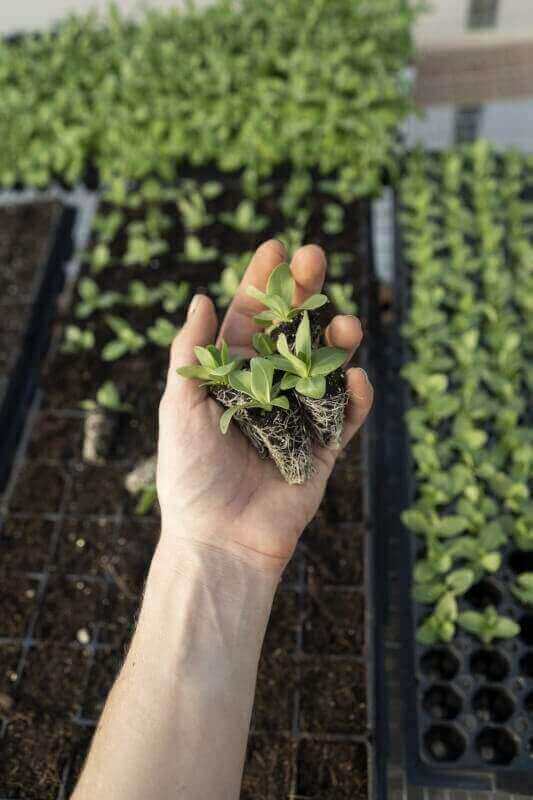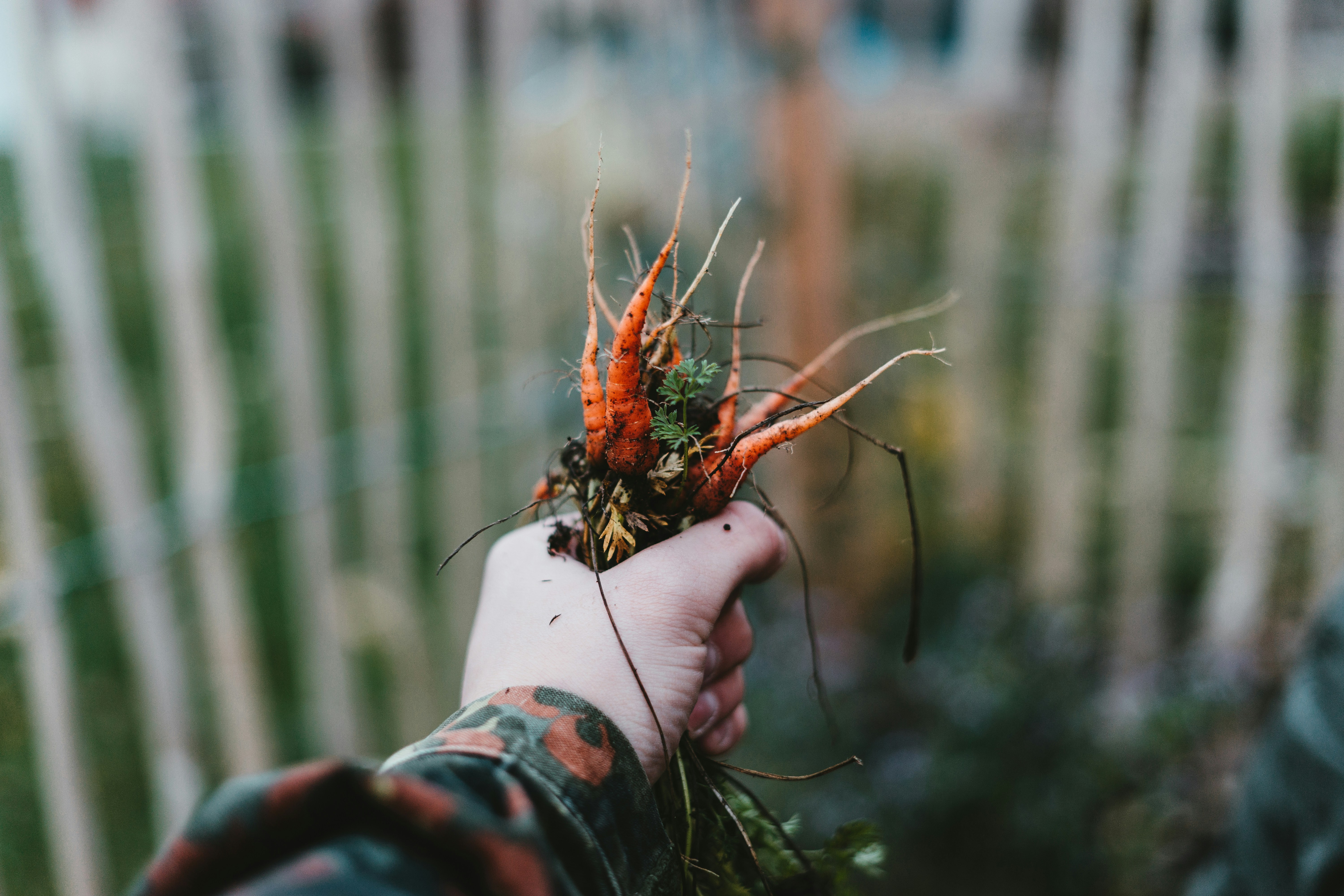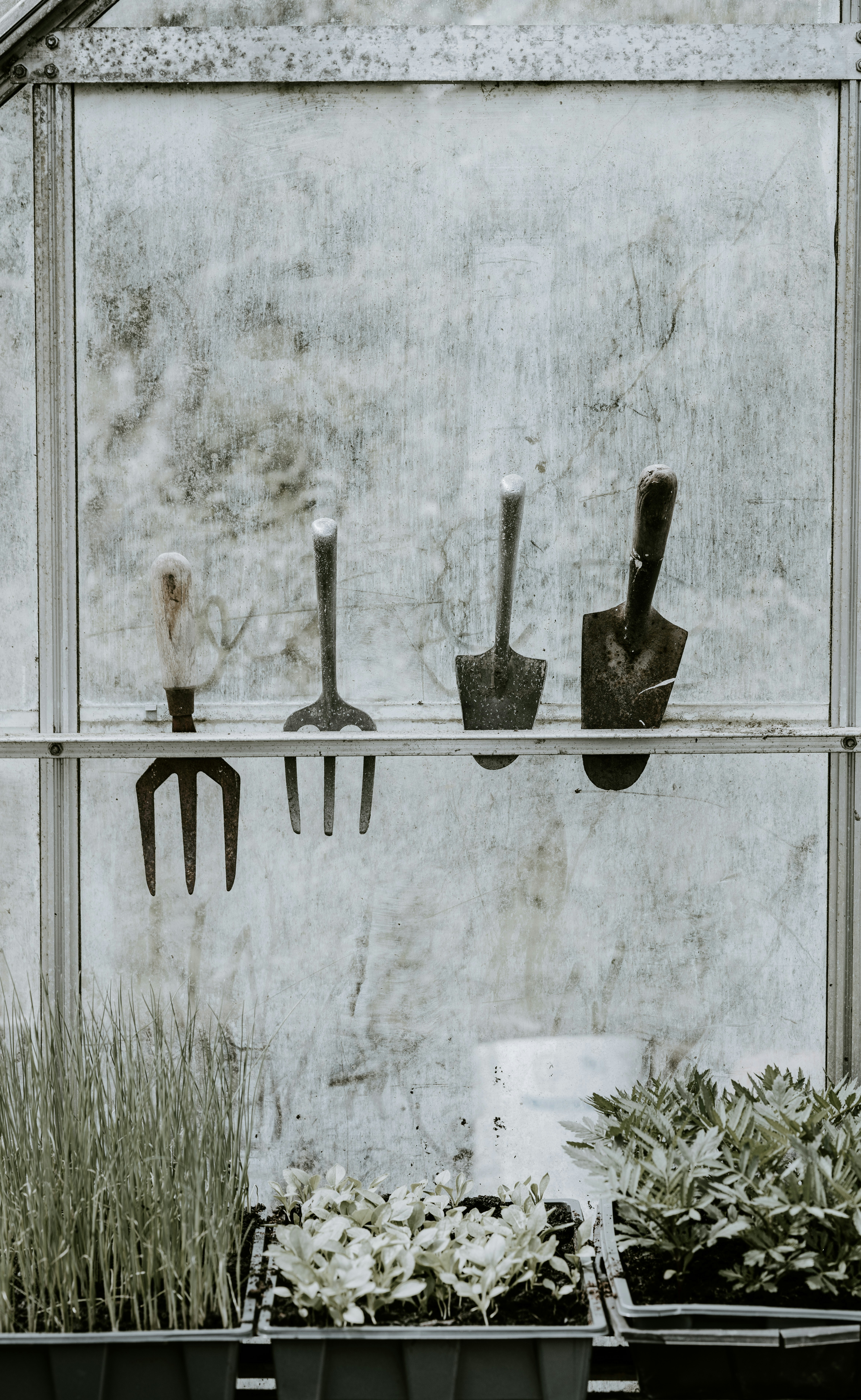👋 Click the mic button to talk to Alfred, the Todd's Seeds Gardening/Sprouting Expert – Feel free to ask him anything!
Ask Virtual Todd Anything - Click the Mic
Are you interested in starting your own organic garden but not sure where to begin? Look no further! In this article, we will explore the fundamental principles of organic gardening and provide you with everything you need to know to get started. From understanding the importance of soil health to learning about natural pest control methods, we will guide you through the basics of organic gardening and empower you to create a thriving, sustainable garden that is good for you and the environment. Whether you have a green thumb or are new to gardening, this article is your go-to resource for all things organic gardening.
Planning an Organic Garden
Choosing the Right Location
When planning your organic garden, one of the first things to consider is choosing the right location. Look for an area that receives at least six to eight hours of sunlight per day, as most vegetables and fruits thrive in full sun. Additionally, assess the soil drainage to ensure it is not too compacted or prone to waterlogging. A location with good air circulation is also desirable to minimize the risk of diseases.
Determining the Size of your Garden
Once you have chosen the ideal location, it’s time to determine the size of your organic garden. Consider the amount of space you have available, the time and effort you are willing to invest, and the number of plants you want to grow. Start small if you are a beginner, as it is easier to manage and maintain a smaller garden. As you gain experience and confidence, you can always expand your garden in the future.
Considering Sunlight and Shade
When planning the layout of your organic garden, it is crucial to take into account the sunlight and shade patterns in your chosen location. Place taller plants or structures on the northern side of your garden to avoid blocking the sun from the smaller plants. Be aware of any trees or buildings that could cast shadows and disrupt the sunlight exposure. By understanding the sunlight and shade dynamics, you can optimize the growth and productivity of your plants.
Creating a Layout and Design
Designing the layout of your organic garden is not only functional but also aesthetically pleasing. Consider the spacing requirements for different plants and arrange them in a way that allows for easy access and efficient use of space. Some gardeners prefer a rectangular grid pattern, while others prefer more organic and flowing designs. Experiment with different layouts and find what suits your preferences and garden needs.
Deciding on the Types of Plants
One of the joys of organic gardening is the diversity of plants you can grow. When deciding on the types of plants, consider your local climate, the seasonality of the crops, and your personal preferences. Opt for a mix of vegetables, fruits, herbs, and flowers to create a harmonious and balanced ecosystem in your garden. Research the specific needs of each plant and choose varieties that are well-suited to organic cultivation.
Preparing the Soil
Testing your Soil
Soil testing is an essential step in preparing your organic garden. It helps determine the nutrient levels, pH balance, and overall health of your soil. You can purchase a soil testing kit or send a sample to a laboratory for analysis. Based on the results, you can make informed decisions about soil amendments and the types of plants that will thrive in your garden.
Amending the Soil
Organic gardening focuses on building healthy soil, and amendments are key to achieving this goal. Add organic matter such as compost, well-rotted manure, and leaf mulch to improve soil structure and fertility. Consider using natural amendments like bone meal, rock phosphate, and green manure to provide specific nutrients that your plants require. It is important to understand the nutrient requirements of your plants and choose amendments accordingly.
Adding Compost and Organic Matter
Compost is often referred to as “black gold” for organic gardeners. Adding compost to your soil not only enriches it with nutrients but also improves its texture and water-holding capacity. Start a compost pile in your garden or use ready-made compost from an organic supplier. Incorporate the compost into the top few inches of soil, ensuring that it is well-mixed and distributed evenly. This will lay the foundation for a vibrant and fruitful organic garden.
Choosing Organic Seeds and Plants
Selecting Certified Organic Seeds
When it comes to organic gardening, it is crucial to source certified organic seeds. These seeds have been produced without the use of synthetic pesticides, herbicides, or genetically modified organisms (GMOs). Look for the “Certified Organic” label on seed packets or purchase seeds from reputable organic seed companies. By choosing certified organic seeds, you can ensure that your garden starts off on the right foot and remains true to the principles of organic gardening.
Opting for Heirloom Varieties
Heirloom varieties are open-pollinated plants that have been passed down through generations, maintaining their unique characteristics and flavors. These varieties are often more resilient and better adapted to local conditions. By selecting heirloom varieties, you contribute to preserving biodiversity and enjoying a wider range of flavors and colors in your harvest. Explore the world of heirloom vegetables and fruits to add diversity and excitement to your organic garden.
Avoiding Genetically Modified Organisms
One of the fundamental principles of organic gardening is avoiding genetically modified organisms (GMOs). GMOs are plants that have been genetically engineered in a laboratory, often to withstand herbicides or produce their own insecticides. To maintain the integrity of your organic garden, choose seeds and plants that are non-GMO. Read labels, ask questions, and support companies that prioritize sustainable and GMO-free farming practices.
Starting Seeds Indoors
Gathering Supplies
To start your seeds indoors, gather the necessary supplies. You will need containers or trays, seed starting mix, seeds, a watering can or mister, and a grow light or sunny location with adequate light. Choose containers with good drainage and enough space for the seedlings to grow before transplanting them into the garden. Clean all containers to prevent the spread of diseases and ensure the health of your seedlings.
Setting Up a Seed-Starting Area
Find a suitable location in your home to set up a dedicated seed-starting area. It should be well-lit, preferably near a south-facing window or under grow lights. Maintain a consistent temperature between 65-75°F (18-24°C) to promote healthy seed germination. Protect your seedlings from drafts and temperature fluctuations that can stunt their growth or cause damage.
Sowing the Seeds
Follow the instructions on the seed packets for appropriate planting depth and spacing. Make small holes in the seed starting mix using a pencil or your finger. Place one or two seeds in each hole, gently covering them with soil and firming it down. Label each container with the plant name and date of sowing. Mist the soil with water, ensuring it is moist but not soaked.
Providing Adequate Light and Water
Seedlings need ample light to grow strong and healthy. If you are using natural light, ensure the seedlings receive at least 12-16 hours of direct sunlight per day. If relying on grow lights, position them 2-4 inches above the seedlings and adjust the height as the plants grow. Water the seedlings gently, keeping the soil consistently moist but not waterlogged. Avoid overwatering, as it can promote the growth of molds or fungi.

Planting and Transplanting
Preparing the Planting Area
Before planting or transplanting your seedlings, prepare the planting area in your garden. Remove any weeds or grass, dig the soil to a depth of 8-10 inches, and break up any clumps. Incorporate additional organic matter or compost to further improve the soil structure and fertility.
Establishing Proper Spacing
Proper spacing is vital for the healthy development of your plants. Consult the seed packets or plant labels for recommended spacing guidelines. Leave enough room for each plant to grow without crowding its neighboring plants. Adequate spacing promotes proper airflow, reduces the risk of diseases, and ensures each plant receives sufficient nutrients and sunlight.
Digging the Planting Holes
When it’s time to plant your seedlings in the garden, dig holes that are just slightly larger than the root balls. Gently loosen the roots of each seedling before placing it into the hole. Position the plant at the same depth it was growing in the seedling container. Refill the hole with soil, firming it down gently to eliminate air pockets around the roots.
Planting Seedlings and Transplants
Take care when handling and planting seedlings and transplants to avoid damaging the delicate roots. Water the seedlings before transplanting to ensure the roots are well-hydrated. Create a small depression around each plant to hold water and direct it to the root zone. Water the newly transplanted seedlings immediately after planting to help them establish and reduce transplant shock.
Watering and Maintaining the Garden
Understanding Watering Needs
Water is a vital ingredient in the success of your organic garden. Different plants have different watering needs, so it’s important to understand the requirements of each variety in your garden. Generally, it is best to water deeply and infrequently rather than providing frequent shallow waterings. This encourages deep root growth and makes plants more resilient to drought.
Using Proper Watering Techniques
To promote efficient water usage and prevent diseases, water the base of the plants rather than wetting the leaves. Use a soaker hose, drip irrigation system, or watering can with a gentle shower attachment for targeted watering. Water early in the morning to give the plants time to dry before evening, minimizing the risk of fungal diseases.
Mulching to Conserve Moisture
Mulching is a great way to conserve soil moisture, suppress weed growth, and regulate soil temperature. Use organic materials like straw, grass clippings, or shredded leaves as mulch. Apply a layer of mulch around your plants, leaving a small space around the stems to allow for air circulation. Mulch also contributes organic matter to the soil as it breaks down, further improving soil fertility.
Regular Weeding and Pest Control
Weed regularly to prevent competition for nutrients and to maintain a clean and tidy garden. Hand-pull weeds or use organic weed control methods rather than resorting to synthetic herbicides. Regularly inspect your plants for signs of pests and diseases. Employ natural pest control methods such as companion planting, insect-repellent plants, and biological controls to minimize damage.
Maintaining a Healthy Garden
Promote the overall health of your organic garden by providing proper care and maintenance. Monitor for any signs of nutrient deficiencies or plant stress and take appropriate action. Stay vigilant against pests and diseases and address any issues promptly. Regularly remove dead or spent plants to prevent the spread of diseases. With proper care and attention, your organic garden will thrive and reward you with bountiful harvests.
Fertilizing Organically
Using Organic Fertilizers
Organic fertilizers are derived from natural sources and provide essential nutrients for your plants. Options include compost, worm castings, seaweed extracts, and animal manures. Apply organic fertilizers according to the specific needs of your plants and the recommendations on the packaging. Organic fertilizers release nutrients slowly, ensuring a steady supply over time.
Composting for Nutrient-Rich Soil
Composting is a valuable practice in organic gardening for creating nutrient-rich soil. Set up a compost bin or heap in your garden and add organic kitchen scraps, yard waste, and plant trimmings. Turn the compost regularly to promote decomposition and facilitate the breakdown of organic matter into nutrient-rich humus. Apply the compost to your garden beds to provide a continuous source of nutrients for your plants.
Foliar Feeding for Quick Nutrient Absorption
Foliar feeding involves applying a diluted organic fertilizer directly to the leaves of your plants. This method allows for quick nutrient absorption and can help address nutrient deficiencies. Mix the organic fertilizer with water according to the manufacturer’s instructions and use a spray bottle or a sprayer to evenly coat the leaves. Apply foliar feedings in the early morning or late afternoon when the temperatures are cooler to minimize the risk of leaf burn.
Pruning and Training Plants
Understanding the Importance of Pruning
Pruning is an important practice in organic gardening that promotes plant health, airflow, and productivity. Regularly prune your plants to remove dead or diseased branches, improve sunlight penetration, and manage excessive growth. By removing unwanted or extra branches, you help redirect the plant’s energy towards fruit or flower production, resulting in higher yields.
Removing Diseased or Damaged Parts
Inspect your plants regularly for any signs of diseases or pests. Promptly remove any diseased or damaged parts to prevent the spread of infections. Use sterilized pruning tools, such as shears or secateurs, to make clean cuts just above a bud or leaf node. Dispose of the removed plant material away from the garden to prevent reinfestation or contamination.
Training Vines and Climbing Plants
Vines and climbing plants require proper training and support to maximize their growth potential. Provide trellises, fences, or stakes for plants like tomatoes, cucumbers, and beans to climb. Regularly guide and tie the stems to the support structure to prevent breakage and promote upright growth. Training vines and climbing plants not only saves space but also facilitates better air circulation and sunlight exposure.

Harvesting Organic Vegetables and Fruits
Knowing the Right Time to Harvest
Harvesting at the right time ensures that you enjoy the full flavor and nutritional benefits of your organic vegetables and fruits. Different crops have different signs indicating their readiness for harvest, such as size, color, or firmness. Refer to seed packets or gardening guides to determine the optimal harvesting stage for each plant. Regularly check your garden for mature produce to prevent overripening or spoilage.
Harvesting Techniques for Different Crops
Each vegetable and fruit has its own specific harvesting technique to minimize damage and maximize yield. Use sharp pruners or shears to harvest vegetables like lettuce or leafy greens, taking care to avoid bruising the leaves. For fruits like tomatoes or peppers, use a gentle twisting motion to detach them from the plant. Research the appropriate harvesting techniques for the crops in your garden to ensure a successful harvest.
Storing and Preserving Fresh Produce
After harvesting your organic vegetables and fruits, it is important to store or preserve them properly to maintain their quality and freshness. Some produce can be stored in a cool, dry place, while others require refrigeration. Consider canning, freezing, or drying excess produce to preserve them for future use. Proper storage and preservation techniques will allow you to enjoy the fruits of your labor for an extended period.
Dealing with Garden Pests and Diseases
Identifying Common Garden Pests
Garden pests can wreak havoc on your organic garden if left unchecked. Some common pests include aphids, slugs, snails, and caterpillars. Regularly inspect your plants for any signs of pest infestation, such as holes in leaves or sticky residue. Identifying the pests correctly is essential for choosing the appropriate control methods and ensuring minimal damage to your plants.
Natural Pest Control Methods
Organic gardening relies on natural and environmentally-friendly pest control methods. These include using companion planting, such as planting marigolds near tomatoes to repel pests, or introducing beneficial insects like ladybugs or lacewings that prey on pests. You can also make homemade pest deterrent sprays using ingredients like neem oil or garlic. Vigilance and early intervention are crucial in managing pests organically.
Preventing Diseases
Preventing diseases is a key aspect of organic gardening. Maintaining good airflow, practicing proper sanitation, and promoting plant health are effective ways to prevent diseases. Avoid overcrowding plants, water at the base, and remove any diseased or fallen plant material from the garden. Crop rotation and the use of disease-resistant varieties also help minimize the risk of diseases in your organic garden.
Addressing Common Plant Diseases
Despite your best efforts, plant diseases may still occur in your organic garden. If you notice any signs of disease, promptly identify the issue and take appropriate action. Organic fungicides like copper or sulfur can be used to manage fungal diseases. Some diseases may require removing and disposing of infected plants to prevent further spread. Regular monitoring and quick intervention are crucial to addressing plant diseases organically.
By following these steps and practicing organic gardening techniques, you can create a thriving, sustainable, and bountiful organic garden. Enjoy the journey of growing your own food, connecting with nature, and reaping the benefits of a healthy and environmentally-friendly lifestyle. Happy gardening!


